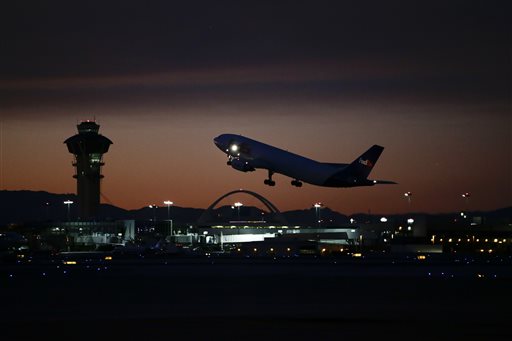CEO predictions for the next 100 years of flying
NEW YORK—Millions of people step aboard airplanes each day, complaining about the lack of legroom and overhead space but almost taking for granted that they can travel thousands of miles in just a few hours.
Wednesday marks the 100th anniversary of the first commercial flight: a 23-minute hop across Florida’s Tampa Bay. The St. Petersburg-Tampa Airboat Line was subsidized by St. Petersburg officials who wanted more winter tourists in their city. The alternative: an 11-hour train ride from Tampa.
Pilot Tony Jannus had room for just one passenger, who sat next to him in the open cockpit. Three months later — when tourism season ended — so did the subsidy. The airline had carried 1,204 passengers but would never fly again.
With the anniversary in mind, The Associated Press reached out to today’s aviation leaders to see what they are predicting for the future of flying. Answers have been edited for length and clarity.
IN FIVE YEARS:
Article continues after this advertisement— Richard Anderson, CEO Delta Air Lines: “Just over a decade ago airlines seemed to be buying every 50-seat aircraft they could get their hands on. But the real utility of those small jets has come and gone and in the next five years we’ll see their numbers in the U.S. continue to dwindle.”
Article continues after this advertisement— Gary Kelly, CEO Southwest Airlines: “We’ll have fewer airlines, but they will be bigger, stronger and healthier.”
— Maurice J. Gallagher, Jr., CEO Allegiant Travel Co.: “The next five years will be all about increasing automation and decreasing labor cost. The industry is already implementing mobile boarding passes, bag drops, even self-boarding. These processes will become more prevalent and significantly reduce the number of employees the customer needs to interact with.”
IN 25 YEARS:
— David Barger, CEO JetBlue Airways: “The freedom to travel between any two points in the world will be commonplace. There will be billions of travelers every year flying on new aircraft that will be environmentally friendly; in fact, they will be making zero-carbon travel maybe even a reality.”
— Mark Dunkerley, CEO Hawaiian Airlines: “Many of today’s consumers will be priced out of the air: a sad legacy to 30 years of massive progress in democratizing air travel. Failure to invest in aviation infrastructure and the insatiable appetite for regulation will not be offset by relatively modest further improvements in aircraft efficiency.”
— James Hogan, CEO Etihad Airways: “A new generation of airlines, who have the vision and willingness to be different, will succeed in cutting costs, improving productivity and finding affordable ways of accessing new markets. The emerging markets — the Middle East, Africa, Southeast Asia — will become established markets and Abu Dhabi will be one of the uniting global hubs.”
— Sir Richard Branson, president Virgin Atlantic Airways: “I have no doubt that during my lifetime we will be able to fly from London to Sydney in under two hours, with minimal environmental impact. The awe-inspiring views of our beautiful planet below and zero-gravity passenger fun will bring a whole new meaning to in-flight entertainment.”
— Jeff Smisek, CEO United Airlines: “The airframe and engine manufacturers continue to develop aircraft that are more fuel-efficient, have lower maintenance costs and have greater range and utility. Longer term, I believe manufacturers will explore engine and airframe technology that could significantly reduce travel times, but advances in this area would have to be safe and economical to make a real impact on our industry.”
IN 100 YEARS:
— David Siegel, CEO Frontier Airlines: “The first flight was just 18 miles (29 kilometers) long, but now look how far we can go. Perhaps in the future, experts will be designing futuristic propulsion systems. We could see innovations in aircraft design, local community-based air transport with smaller, higher efficiency aircraft, and maybe even pilotless commercial aircraft.”
— Doug Parker, CEO American Airlines: “I am quite certain that Tony Jannus never could have imagined the size and importance of commercial aviation today, or the impact it had on changing our world. Similarly, I cannot imagine what commercial aviation will look like in 2114. I imagine whatever state it is, though, it will be extremely important and its continued development will be a key part of the story that built that world.”
— Ben Baldanza, CEO Spirit Airlines: “Google’s ‘put me there’ technology implemented into its maps software renders all airlines obsolete.”
